This course is a chance for students to explore the deep thoughts behind advanced nursing and inquiry. We’ll talk about the philosophy of reflective practice, which is basically how we think about learning and knowledge. We’ll also check out different ways of doing research and how they connect to what we do in our practice. Just a heads up, you need to get a B- or higher to pass the course.
Johns Hopkins Nursing Evidence-Based Practice
Appendix E
Research Evidence Appraisal Tool
| Evidence level and quality rating: | Level: II Grade: A |
| Article title: Relationship between toxoplasmosis and obsessive-compulsive disorder: A systematic review and meta-analysis | Number: 1 |
| Author(s): Tooran Nayeri Chegeni, Shahabeddin Sarvi, Afsaneh Amouei,Mahmood Moosazadeh, Zahra Hosseininejad, Sargis A. AghayanI, AhmadDaryani | Publication date:04/2019 |
| Journal: Public Library of Science | |
| Is this study: Quantitative (collection, analysis, and reporting of numerical data)Measurable data (how many; how much; or how often) used to formulate facts, uncover patterns in research, and generalize results from a larger sample population; provides observed effects of a program, problem, or condition, measured precisely, rather than through researcher interpretation of data. Common methods are surveys, face-to-face structured interviews, observations, and reviews of records or documents. Statistical tests are used in data analysis. Go to Section I: QuaNtitative Qualitative (collection, analysis, and reporting of narrative data)Rich narrative documents are used to uncover themes; and describe a problem or condition from the point of view of those experiencing it. Common methods are focus groups, individual interviews (unstructured or semi-structured), and participation/observations. Sample sizes are small and are determined when data saturation is achieved. Data saturation is reached when the researcher identifies that no new themes emerge and redundancy is occurring. Synthesis is used in data analysis. Often a starting point for studies when little research exists; may use results to design empirical studies. The researcher describes, analyzes, and interprets reports, descriptions, and observations from participants. Go to Section II: QuaLitative Mixed methods (results reported both numerically and narratively)Both quantitative and qualitative methods are used in the study design. Using bothapproaches, in combination, provides a better understanding of research problems than using either approach alone. Sample sizes vary based on the methods used. Data collection involves collecting and analyzing both quantitative and qualitative data in a single studyor series of studies. Interpretation is continual and can influence stages in the research process. Go to Section III: Mixed Methods | |
| Section I: QuaNtitative | ||
| Level of Evidence (Study Design) | ||
| Is this a report of a single research study? | Yes | No Go to B |
| 1. Was there manipulation of an independent variable? | Yes | No |
| 2. Was there a control group? | Yes | No |
| 3. Were study participants randomly assigned to the intervention andcontrol groups? | Yes | No |
| If Yes to questions 1, 2, and 3, this is a randomized controlled trial (RCT) or experimentalstudy. | LEVEL I | |
| If Yes to questions 1 and 2 and No to question 3 or Yes to question 1 and No to questions 2and 3, this is quasi-experimental.(Some degree of investigator control, some manipulation of an independent variable, lacksrandom assignment to groups, and may have a control group). | LEVEL II | |
| If No to questions 1, 2, and 3, this is nonexperimental.(No manipulation of independent variable; can be descriptive, comparative, or correlational; often uses secondary data) | LEVEL III | |
| Study Findings That Help Answer the EBP Question | ||
| Skip to the Appraisal of QuaNtitative Research Studies section | ||
| Section I: QuaNtitative (continued) | ||
| Is this a summary of multiple sources of researchevidence? | Yes Continue | No Use Appendix F |
| 1. Does it employ a comprehensive search strategy and rigorous appraisal method?If this study includes research, non research, and experiential evidence, it is an integrative review (see Appendix F). | Yes Continue | No Use Appendix F |
| 2. For systematic reviews and systematic reviews with meta-analysis(see descriptions below): | ||
| a. Are all studies included RCTs? | LEVEL I | |
| b. Are the studies a combination of RCTs and quasi-experimental, or quasi-experimental only? | LEVEL II | |
| c. Are the studies a combination of RCTs, quasi-experimental, and nonexperimental, or non-experimental only? | LEVEL III | |
| A systematic review employs a search strategy and a rigorous appraisal method, butdoes not generate an effect size.A meta-analysis, or systematic review with meta-analysis, combines and analyzesresults from studies to generate a new statistic: the effect size. | ||
| Study Findings That Help Answer the EBP Question | ||
| Skip to the Appraisal of Systematic Review (With or Without a Meta-Analysis) section | ||
| Appraisal of Systematic Review (With or Without Meta-Analysis) | ||
| Were the variables of interest clearly identified? | Yes | No |
| Was the search comprehensive and reproducible?Key search terms stated | Yes | No |
| Multiple databases searched and identified | Yes | No |
| Inclusion and exclusion criteria stated | Yes | No |
| Was there a flow diagram that included the number of studies eliminated at each level of review? | Yes | No |
| Were details of included studies presented (design, sample, methods, results, outcomes, strengths, and limitations)? | Yes | No |
| Were methods for appraising the strength of evidence (level and quality) described? | Yes | No |
| Were conclusions based on results? | Yes | No |
| Results were interpreted | Yes | No |
| Conclusions flowed logically from the interpretation and systematic review question | Yes | No |
| Did the systematic review include a section addressinglimitations and how they were addressed? | Yes | No |
| Complete the Quality Rating for QuaNtitative Studies section (below) | ||
| Quality Rating for QuaNtitative Studies |
| Circle the appropriate quality rating below: A High quality: Consistent, generalizable results; sufficient sample size for the study design; adequate control; definitive conclusions; consistent recommendations based on comprehensive literature review that includes thorough reference to scientific evidence. B Good quality: Reasonably consistent results; sufficient sample size for the study design; some control, and fairly definitive conclusions; reasonably consistent recommendations based on fairly comprehensive literature review that includes some reference to scientific evidence. C Low quality or major flaws: Little evidence with inconsistent results; insufficient sample size for the study design; conclusions cannot be drawn. |
Must Read:


